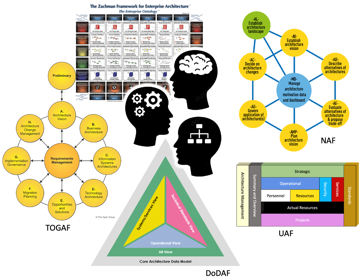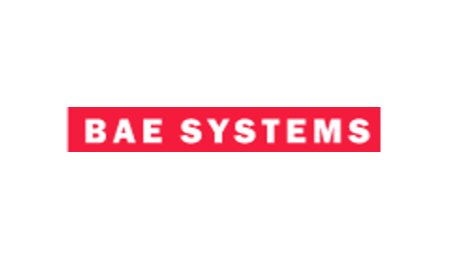
BAE SystemsA MBSE approach to mitigate ontological mismatches across Architectural Frameworks
Project Overview

The goal of this body of work is to develop an efficient methodology, test its viability to ensure it facilitates consistent data transfer across different Architectural Frameworks (AFs); using a Model-Based Systems Engineering approach. The successful transfer of data will be beneficial to the organisation. It has the capacity to increase capability and empower large multi-disciplinary design teams. This is also promote collaboration within and across different organisations, to mitigate ontology-based unplanned rework throughout the system lifecycle.
The need for a unified Architectural Description and a consistent transfer of data stemmed from the emergence of ontological mismatches in System of Systems (SoS) which occurs because of inconsistencies due to various terminology, ontology, and methodology for ‘architecting’ that underpins AFs on a multi-disciplinary level. These mismatches occur because of the divergence from a unified methodology, hence causing undesirable and unplanned emergent behaviour and rework during the product lifecycle.
The intent is to facilitate the translation of data cross AFs through an investigation of the effectiveness and accuracy of a semantic web ontology approach. The possibility to create a ‘Rosetta stone’ for AFs, which will link any two or more different model viewpoints in different Architectural Frameworks through translation will be evaluated.
Ultimately, a formalised methodology would reduce variance in models and AFs, easing collaboration efforts within and across organisations. Hence, consistent, and coherent datasets can be easily translated across different AFs.
Why Strathclyde

I chose the University of Strathclyde because they have an excellent outstanding academic track record in Engineering and in research. Strathclyde is a multi-award-winning university, well recognised across various higher institutions, and reputable for excellence within the field of Engineering. I wanted to attend a university that will contribute to my growth and development.
Another factor that influenced my choice was I wanted a university that has wider connection with the industry. Strathclyde indeed has a great connection with industrial partners, BAE Systems, major links with defence companies and other influential in my field.
Following the completion of my MEng Mechanical Engineering degree, I wanted to make a difference in my chosen career as an Engineer. Specifically, I was searching for an environment where I would be able to collaborate with industrial partners whilst learning, contributing, and getting ample opportunities to hone my skills as a competent engineer. I knew the University of Strathclyde would be a great place to learn, grow, thrive, and an environment that would allow me to significantly ‘contribute to knowledge’.
The university of Strathclyde is a place that fosters social progressiveness, diversity and inclusivity which is important to me, not only as an ethnic minority but also as a woman in STEM.
Researcher Experience

Throughout the period of my doctoral training, I have maintained regular communication with the partnering company (BAE Systems Maritime – Naval Ships) through monthly supervision meetings, Architecture modelling Special Interest Group (SIG), presented at the BAE Systems virtual conference, and attended the BAE Systems graduate workshop.
The support and mentorship provided by the academic supervisors, industrial supervisors and individuals within the business has been invaluable. Not only are they experts in their field, imparting knowledge but they are also competent at supporting and empowering my progress. They deliver on their promise to guide and provide resources needed for my research. Their contributions have been significant to my progress and would have found the programme more challenging without their support. Great insight into the challenges faced within the industry shared, honest, and regular constructive feedback given and tacit knowledge within the organisation explored. These supports have helped to shape my thoughts, my journey to finding the ‘gap in knowledge’; and ensuring my ‘contribution to knowledge’ is scalable, mutually beneficial to academia, the business and non-government organisations.
Completed Training courses:
• Model-Based Approach to Systems Engineering by Scrarecrow Consultants Ltd
• Applying SysML and MBSE with Cameo Systems Modeler by CATIA No Magic – Cyber Systems
• Applying NAF 4.0 with UAF and Cameo Systems Modeler by CATIA No Magic – Cyber Systems
Secondment will commence in July 2022.
Business Impact
A critical aspect of a modern technological / engineering project is the consistent and transparent understanding of the project requirements from the start of the concept stage to the delivery and through life support, especially where the contract involves a government or government department.
As an example a modern warship contract will typically have a decade long design and build, followed by 25 to 30 years in service. Throughout this time the key user requirements are decomposed into user requirements, then system requirements and equipment technical specifications as the design matures. As the design is matured, the equipment and systems are simulated, assessed and purchased with regard to the expected service life of the platform. The equipment will be tested and accepted at the factory, delivered to the shipyard, installed and assembled into the system, following this it will be tested, commissioned and presented for Sea Trials. Sea Trials will be the key acceptance event for the platform, where the customer will use the agreed requirements to accept the equipment, systems and finally the platform. At this point (possibly 10 years after the original signing of the contract), at the acceptance of the ship by the customers representative (who will not be the original representative) the agreed statements are assessed for acceptance.
If the platform is not accepted the financial impact, litigation and reputational damage will be substantial, hence it is vital to ensure that through all stages of the design that the interpretation of the requirements is consistent and understood.
